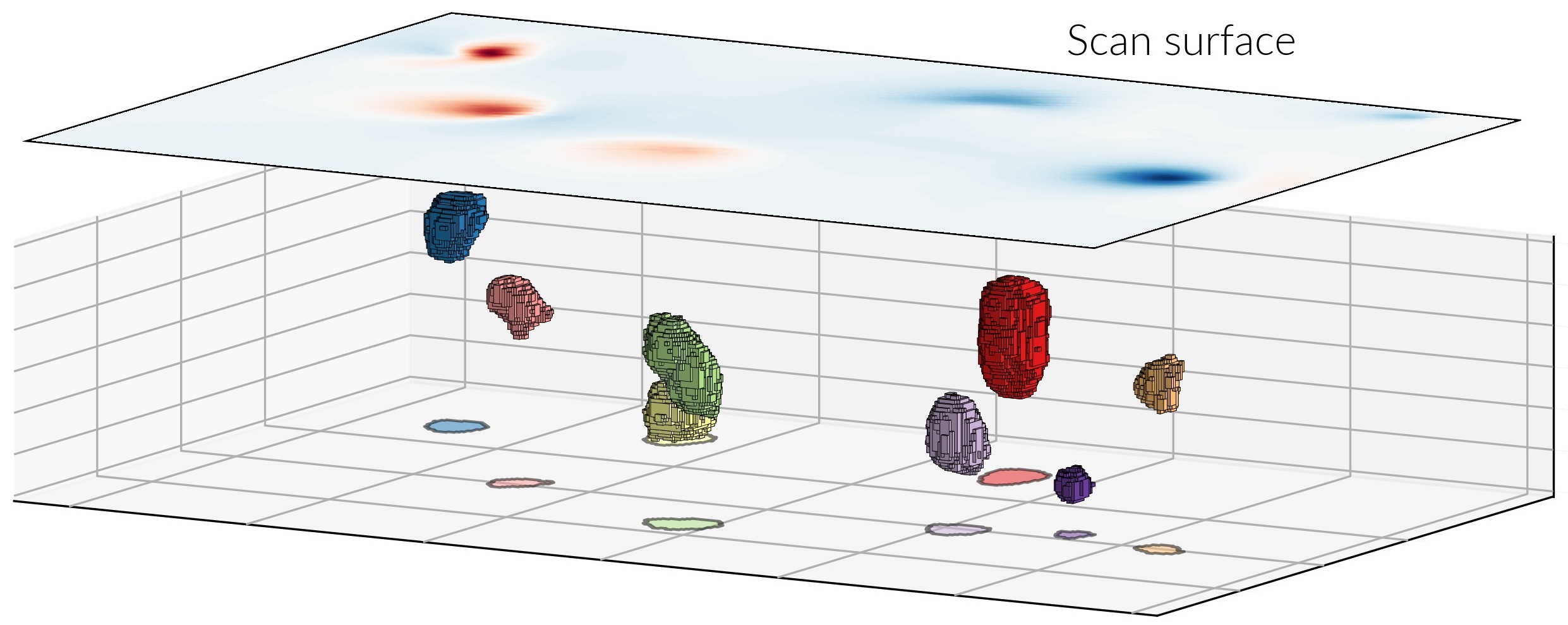MMT Dipole Cuboid Inversion - Homogeneously Magnetized Particle model#

This is the documentation for the mmt_dipole_cuboid_inversion library. This Python module performs numerical inversions from magnetometry or microscopy scan data into grains modelled as aggregations cuboids. The particles are assumed as homogeneously magnetized. Grain geometries and locations are obtained from micro or nano X-ray computed tomography. The main class of this library is the DipoleCuboidInversion class that accepts the measurement data and has the necessary methods to obtain inverted magnetizations.
The scan_data and cuboid_data parameters are passed as text files. The data from the scan measurement is formatted as a \(NxN\) matrix where every element is the out of plane component of the total field passing through a scan sensor whose position and size is defined by the scan_* parameters. The scan sensors are assumed as rectangular sensors. The forward field of every sensor in the forward matrix is modelled as a field flux integrated within the sensor area, hence it is computed in units of Tesla per meter square. Accordingly, the total field of every entry in the scan_data file is multiplied by the scan_area variable. This means the inverted field is also given in units of Tesla per meter square.
The data from tomography is given as a 6 column text table referring to the geometry and location of the cuboids defining the grain profiles. The cuboids are generated from a voxel-aggregation algorithm applied to the raw tomographic data, which results in the largest possible cuboids to describe a grain profile. The cuboid_data files requires the following entries:
x y z dx dy dz index
Columns 1-3 are the cuboid positions, 4-6 are the cuboid edge lengths and the index is an integer number referring to the grain (label) where the cuboid belongs.
An introductory tutorial is provided in the Tutorial section and more complex functionality can be found in the other notebooks
Detailed documentation of every method in the DipoleCuboidInversion class, and functions to plot the data analyzed with this library, can be found in the API section.